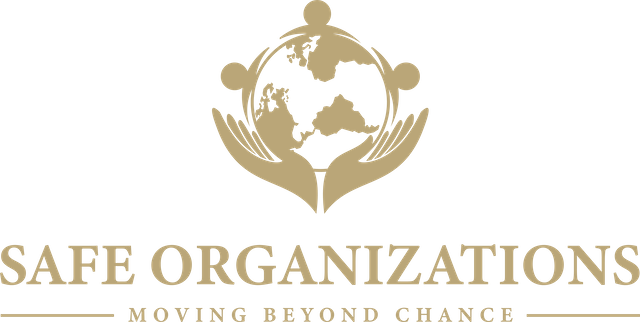Person-Centered Practice
by Kimberley Ducimo
What It Means to Be Person-Centered in Organizational Practices and Safeguarding
Being person-centered is more than just a buzzword; it is a foundational approach that places individuals and their needs, rights, and experiences at the heart of organizational practices. In safeguarding and organizational decision-making, this approach ensures that every action respects the dignity, autonomy, and well-being of those involved. Here’s what it means to be truly person-centered in practice:
1. Prioritizing Individual Agency
A person-centered approach begins with respecting the autonomy of individuals—children and adults alike. This means actively listening to their voices, involving them in decision-making processes, and ensuring they have the information and tools needed to make informed choices. In safeguarding, this involves seeking the consent/assent and input of those affected before implementing proactive or reactive safeguarding measures or interventions. Here are some examples:
✅ Community Engagement plans
✅ Child Participation strategies
✅ Focus Group Discussions (FGDs)
✅ Community participation in program risk assessments
✅ Safety & Risk Assessments (during response to safeguarding concerns)
2. Building Practices Around Lived Experiences
Organizational policies often succeed or fail based on how well they align with the realities of those they serve. Being person-centered requires taking the time to understand the diverse experiences, challenges, and needs of individuals, particularly those who are most vulnerable. Co-designing processes with stakeholders—from employees to community members—can help create programs and systems that are responsive, effective, and equitable. Here are some examples:
✅ Proposal planning and design with communities
✅ Storytelling and testimonial sharing
✅ Community Assessment
✅ GESI Assessment
✅ Community Advisory Board
✅ Feedback loops
✅ Build local partnerships (emphasis on partner[1])
✅ Reflecting community voices in decisions
3. Fostering Equity and Belonging
To be person-centered, organizations must recognize and address systemic inequities. Safeguarding practices should account for intersecting identities such as race, gender, disability, and socio-economic status, ensuring that marginalized groups are not disproportionately affected by harm. While inclusion often focuses on tolerance and making space for diverse individuals, belonging goes further by fostering genuine acceptance and a sense of "membership" within the organization. Equity in safeguarding ensures that everyone has access to the same level of protection and support, tailored to their unique circumstances. Here are some examples:
✅ Listen and amplify voices
✅ Ensure representation of all community members
✅ Engage with cultural humility
✅ Develop policies and adopt practices that acknowledge and address systemic inequities
✅ Provide equitable access to resources and redistribute as needed
✅ Adopt a collaborative and intersectional approach
✅ Create systems with transparent monitoring practices and clear accountability standards
4. Adopting Trauma-Informed Approaches
A trauma-informed perspective is essential to being person-centered. It involves understanding the impact of trauma on individuals and integrating practices that promote the six principles of trauma-informed practice. Trauma-informed safeguarding recognizes that individuals may have experienced harm or neglect and seeks to avoid re-traumatization through compassionate and sensitive interactions. Here are some examples:
✅ Adopt a Trauma-Informed approach organization-wide
✅ Design Community Engagement plans to ensure sensitivity to individual, generational, and community-based trauma experiences
✅ Ensure responses to safeguarding concerns, suspicions, and allegations are rooted in trauma-informed approaches
✅ Engage collaboratively and with mutuality[2] to share power
✅ Promote healing through targeted interventions and programs
5. Maintaining Accountability
Accountability is a cornerstone of person-centered safeguarding. Organizations must establish transparent systems to address concerns, provide recourse for those affected, and continuously evaluate their practices. This includes holding leadership and staff accountable for upholding policies that prioritize the rights and safety of all individuals. Here are some examples:
✅ Community Advisory Board reviews
✅ Regular audits and impact assessments
✅ Community feedback mechanisms
✅ Annual community reports
✅ Community-led evaluations
✅ Public accountability forums
✅ Conflict resolution and grievance systems (with disinterested 3rd as needed)
6. Embedding Flexibility and Adaptability
Being person-centered means acknowledging that one size does not fit all. Organizations must remain flexible and willing to adapt their practices as new needs or challenges arise. This adaptability ensures that safeguarding measures remain relevant and effective over time. Here are some examples:
✅ Customized service/program delivery
✅ Flexibility with services/programs (e.g., locations, hours, etc.)
✅ Adjustments made based on community feedback
In essence, being person-centered in organizational practices and safeguarding is about creating environments where people feel valued, heard, and safe. It requires a commitment to empathy, equity, and continual learning. By prioritizing individuals over processes and policies, organizations can build trust, foster resilience, and uphold their ethical responsibility to protect and empower all members of their communities.
Footnotes:
[1] A community partner, in the truest sense, is an equal collaborator who shares power in decision-making, goal setting, and implementation. Both parties bring unique expertise—community partners offer local knowledge and lived experiences, while organizations provide resources and technical support. The partnership is based on mutual respect, transparent communication, shared accountability, and equitable resource allocation. Both parties have agency, influence outcomes, and benefit equally from the collaboration, ensuring long-term, sustainable, and meaningful impact.
[2] Mutuality refers to a relationship or interaction based on shared responsibility, respect, and benefit. In a mutual relationship, all parties contribute, collaborate, and support each other in a way that values each person's input and ensures that no one is solely dependent on or responsible for the other. In the context of trauma-informed practices, mutuality emphasizes equal power dynamics, where all involved—whether staff, partners, or community members—are seen as collaborators who actively contribute to decisions, processes, and outcomes. This approach fosters a sense of belonging, reduces feelings of powerlessness, and strengthens the overall connection between individuals and the organization.
